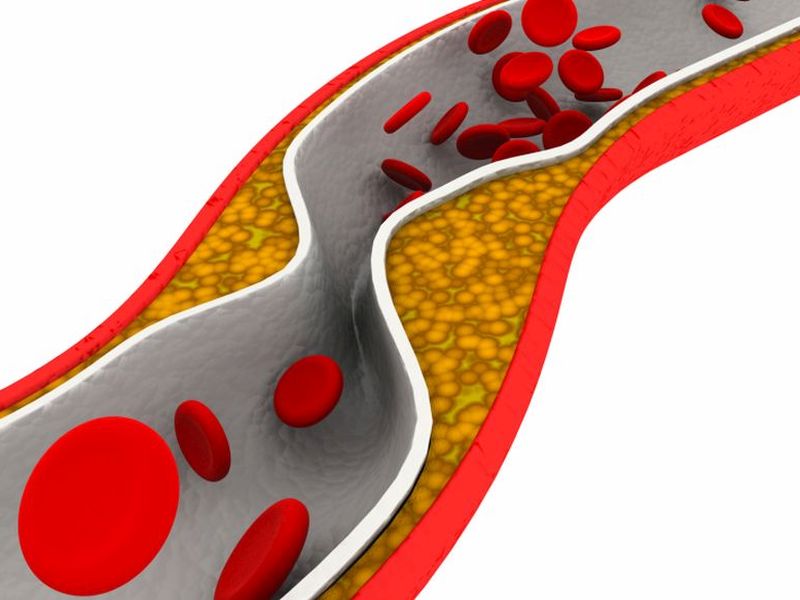
Thursday, December 7, 2017

THURSDAY, Dec. 7, 2017 (HealthDay News) -- In a challenge to current medical practice, new research suggests the use of powerful clot-busting drugs in people with dangerous leg clots may not be routinely warranted.
Deep vein thrombosis (DVT) - the development of a clot in the lower legs - can prove deadly, since the clot can travel to the heart and lungs. DVTs are commonly referred to as "economy class syndrome," after cases were reported in passengers stuck on long-haul flights.
One common approach after a DVT is to use a catheter to deliver a powerful clot-busting drug -- such as tissue plasminogen activator (tPA) -- at the site of the clot. This was thought to help prevent a condition called post-thrombotic syndrome.
The complication can cause chronic limb pain and swelling, making it difficult for people who have had a DVT to walk or do daily activities, the researchers explained.
But using tPA and drugs like it for the condition come with the risk of excess bleeding. So, researchers led by Dr. Suresh Vedantham of Washington University in St Louis sought to determine if the approach really did help patients.
Their conclusion: In most cases, it did not.
The finding has a silver lining, Vendantham said.
"What we know now is that we can spare most patients the need to undergo a risky and costly treatment," he said in a university news release.
The study of nearly 700 U.S. patients with DVTs found that using catheters to clear the blockage with clot-busting drugs did not reduce the risk of post-thrombotic syndrome. The condition occurred in 47 percent of those who got the procedure, and 48 percent of those who did not, the study found.
There was a slight benefit in terms of reductions in the severity of post-thrombotic syndrome in people who got the clot-busters, however.
On the other hand, use of the drugs raised the risk of dangerous bleeding for patients, according to the study published Dec. 7 in the New England Journal of Medicine.
So, standard therapy -- the use of blood-thinning drugs -- may still be the most prudent course to take after a DVT, the research team concluded.
The study was funded by the U.S. National Heart, Lung, and Blood Institute (NHLBI).
"This landmark study, conducted at 56 clinical sites, demonstrated in an unbiased manner no benefits of catheter-directed thrombolysis [clot-removal] as a first-line DVT treatment, enabling patients to avoid an unnecessary medical procedure," said Dr. Andrei Kindzelski. He's the NHLBI program officer connected to the new trial.
Vedantham said the study addresses a tough balancing act for doctors.
"We are dealing with a very sharp double-edged sword here," he explained. "None of us was surprised to find that this treatment is riskier than blood-thinning drugs alone."
"To justify that extra risk, we would have had to show a dramatic improvement in long-term outcomes, and the study didn't show that. We saw some improvement in disease severity, but not enough to justify the risks for most patients."
Vedantham said the procedure might still be used as a "second-line" treatment when post-thrombotic syndrome is severe and doesn't respond to blood thinners.
Two heart specialsts who reviewed the study agreed it had real value.
Dr. Maja Zaric is an interventional cardiologist at Lenox Hill Hospital in New York City. She pointed out that, besides having no effect on the incidence of post-thrombotic syndrome, "the overall quality-of-life scores did not significantly differ between two groups at any point until 24 months of follow-up."
She said this is also the largest study of its kind to date. However, because patients were allowed to take any one of a variety of blood thinners, it was tough to compare outcomes, and "it is certain that similar studies will be needed [in the future]," Zaric said.
Dr. Craig Greben is chief of interventional radiology services at Northwell Health in New Hyde Park, N.Y. He agreed that there may still be a place for clot-busting drugs after DVT -- but only in certain cases.
While the approach "might not be used as the first line of therapy for significant deep vein thrombosis in the legs in most patients, [it] still may have a role as second-line therapy when first-line [blood thinners] treatment fails," he said.
Each year in the United States, between 300,000 and 600,000 people are diagnosed with a first episode of deep vein thrombosis, the researchers noted.
SOURCES: Maja Zaric, M.D., interventional cardiologist, Lenox Hill Hospital, New York City; Craig Greben, M.D., chief, interventional radiology services, Northwell Health, New Hyde Park, N.Y.; Washington University School of Medicine, news release, Dec. 6, 2017
HealthDay
Copyright (c) 2017 HealthDay. All rights reserved.
News stories are written and provided by HealthDay and do not reflect federal policy, the views of MedlinePlus, the National Library of Medicine, the National Institutes of Health, or the U.S. Department of Health and Human Services.
- More Health News on
- Blood Thinners
- Deep Vein Thrombosis
- Medicines




























.jpg)












No hay comentarios:
Publicar un comentario